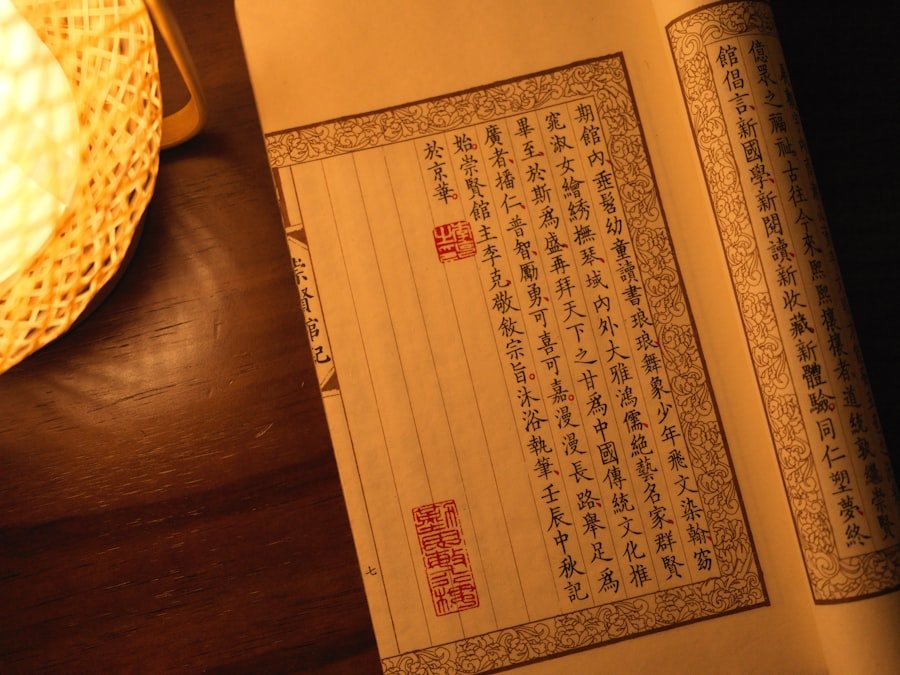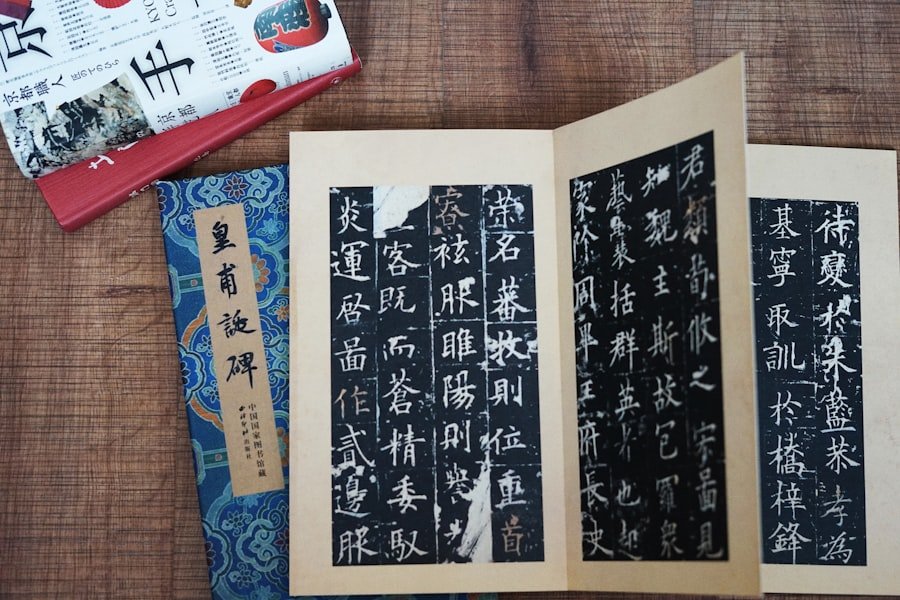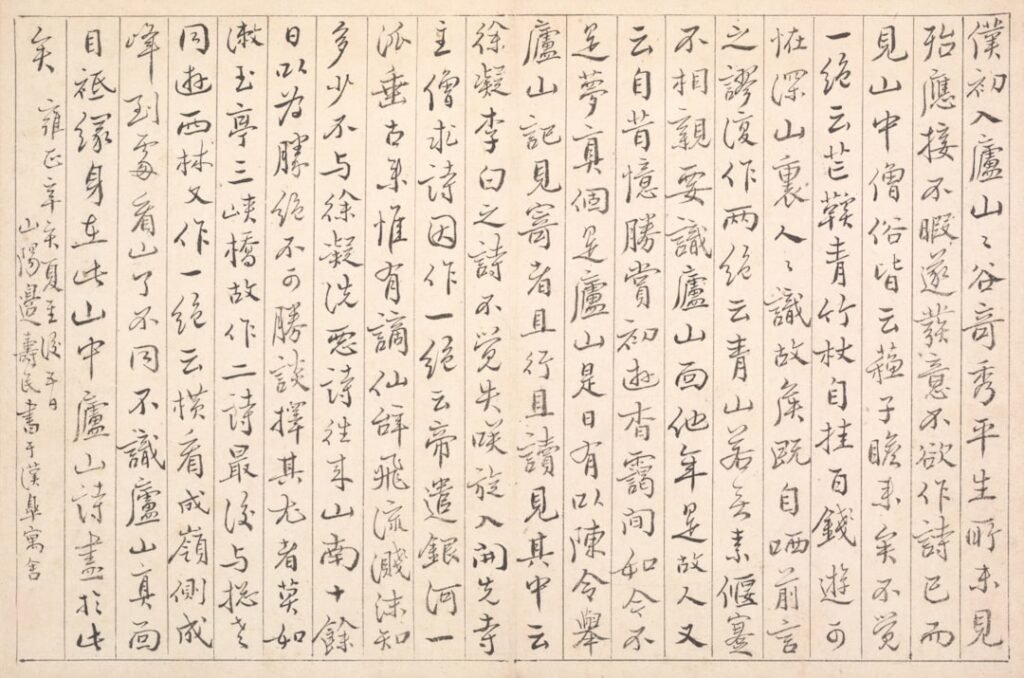Chinese calligraphy is not merely a form of writing; it is an intricate art that embodies centuries of cultural heritage and philosophical depth. This ancient practice transforms the act of writing into a visual spectacle, where each stroke of the brush tells a story, conveying emotions and thoughts that transcend mere words. The beauty of Chinese calligraphy lies in its ability to merge aesthetics with meaning, creating a harmonious balance that captivates both the eye and the mind.
Each character is a work of art, meticulously crafted with precision and grace, reflecting the artist’s inner state and mastery of technique. At its core, Chinese calligraphy is a celebration of the brush and ink, where the artist engages in a dialogue with the materials. The choice of brush, the quality of ink, and the texture of paper all play crucial roles in the final composition.
The fluidity of the brush strokes captures the essence of movement, while the ink’s depth adds richness to the characters. This art form is steeped in tradition, with various styles ranging from the bold and expressive to the delicate and refined. Each style offers a unique perspective on the characters, allowing artists to express their individuality while honouring the legacy of their predecessors. Master the art of Chinese calligraphy. Enroll now at the LC Chinese School in Oslo.
Table of Contents
ToggleSummary
- Chinese calligraphy is an art form that requires patience, practice, and mindfulness.
- Letting go of control and embracing imperfection are key philosophies in Chinese calligraphy.
- Embracing mistakes and finding beauty in flow and fluidity are important aspects of Chinese calligraphy.
- The process of Chinese calligraphy teaches the value of patience and the beauty of embracing the unexpected.
- The lessons of Chinese calligraphy can be applied to everyday life, promoting mindfulness, acceptance, and the beauty of imperfection.
The Philosophy of Letting Go
At the heart of Chinese calligraphy lies a profound philosophy that encourages practitioners to embrace the concept of letting go. This principle is not merely about relinquishing control but rather about surrendering to the flow of creativity. In a world often dominated by rigid structures and expectations, calligraphy invites artists to release their inhibitions and allow their instincts to guide them.
This act of letting go fosters a sense of freedom, enabling artists to explore their creativity without fear of judgement or failure. Letting go in calligraphy also extends to the acceptance of impermanence. Each stroke is a fleeting moment, a snapshot in time that cannot be replicated.
This understanding encourages artists to appreciate the beauty of each creation, regardless of its perceived flaws. By embracing this philosophy, calligraphers cultivate a deeper connection with their art, allowing them to express their emotions authentically and without reservation. The act of letting go becomes a transformative experience, leading to personal growth and artistic evolution.
Embracing Imperfection in Chinese Calligraphy

Imperfection is an inherent aspect of Chinese calligraphy, and embracing it can lead to profound insights for both artists and observers alike. In a society that often prioritises perfectionism, calligraphy serves as a reminder that beauty can be found in flaws. Each character is unique, shaped by the artist’s hand and influenced by their emotional state at that moment.
This individuality adds character to the work, making it a true reflection of the artist’s journey. The acceptance of imperfection also encourages artists to take risks and experiment with their techniques. Rather than striving for flawless execution, calligraphers learn to appreciate the nuances that arise from spontaneity.
A slight deviation in stroke or an unexpected splash of ink can transform a piece into something extraordinary. This willingness to embrace imperfection fosters creativity and innovation, allowing artists to push boundaries and explore new horizons within their craft.
The Role of Patience and Practice in Chinese Calligraphy
Patience is an essential virtue in the practice of Chinese calligraphy. Mastery does not come overnight; it requires dedication, perseverance, and countless hours of practice. Each stroke demands attention and care, as artists learn to control their movements and develop their unique style.
This journey is not merely about achieving technical proficiency but also about cultivating a deeper understanding of oneself through the process. The repetitive nature of practice in calligraphy serves as a meditative exercise, allowing artists to find solace in their craft. As they immerse themselves in the rhythm of brush strokes, they develop a sense of mindfulness that transcends the act of writing.
This patience nurtures resilience, teaching artists to embrace challenges and setbacks as integral parts of their growth. Over time, this commitment to practice not only enhances their skills but also enriches their appreciation for the art form itself.
Finding Peace in the Process of Chinese Calligraphy
The process of creating Chinese calligraphy can be a deeply therapeutic experience, offering practitioners a sanctuary from the chaos of everyday life. As artists engage with their brushes and ink, they enter a state of flow where time seems to stand still. This immersion allows them to disconnect from external distractions and focus solely on the act of creation.
In this space, they can find peace amidst the swirling thoughts and pressures that often accompany modern living. Moreover, calligraphy encourages artists to cultivate a sense of presence in their work. Each stroke becomes an opportunity for mindfulness, as they concentrate on their movements and breathe life into each character.
This intentional focus fosters a sense of calmness and clarity, allowing artists to express their emotions authentically. Through this process, they discover that peace is not merely an end goal but rather an integral part of the artistic journey itself.
Letting Go of Control in Chinese Calligraphy

In Chinese calligraphy, letting go of control is essential for unlocking creativity and spontaneity. Artists often enter their practice with preconceived notions about how their work should look or what techniques they should employ. However, true artistry emerges when they relinquish these expectations and allow themselves to be guided by intuition.
This shift in mindset opens up new avenues for exploration and expression. Letting go of control also means embracing uncertainty. Each brushstroke carries with it an element of unpredictability; no two strokes will ever be identical.
By accepting this uncertainty, artists learn to trust themselves and their instincts. This trust fosters a deeper connection with their art, allowing them to create pieces that resonate on a personal level. In this way, letting go becomes an empowering act that liberates artists from self-imposed limitations.
Accepting Mistakes and Moving Forward in Chinese Calligraphy
Mistakes are an inevitable part of any artistic endeavour, and Chinese calligraphy is no exception. However, rather than viewing mistakes as failures, practitioners are encouraged to see them as opportunities for growth and learning. Each misstep offers valuable insights into technique and style, prompting artists to reflect on their choices and adapt accordingly.
The ability to accept mistakes also cultivates resilience within artists. Instead of becoming discouraged by imperfections, they learn to embrace them as integral components of their journey. This acceptance fosters a sense of humility and openness, allowing artists to approach their work with curiosity rather than fear.
By moving forward from mistakes, they develop a deeper understanding of their craft and enhance their overall artistic expression.
The Beauty of Flow and Fluidity in Chinese Calligraphy
One of the most captivating aspects of Chinese calligraphy is its inherent flow and fluidity. The brush glides across the paper with grace, creating dynamic strokes that evoke movement and energy. This fluidity is not only visually appealing but also reflects the artist’s emotional state at the time of creation.
Each stroke carries with it a sense of rhythm and harmony that resonates with viewers on a profound level. The beauty of flow in calligraphy lies in its ability to convey emotions without words. A single character can encapsulate joy, sorrow, or contemplation through its form and movement.
This expressive quality invites observers to engage with the artwork on an emotional level, fostering a deeper connection between artist and audience. In this way, flow becomes a powerful medium for communication, transcending language barriers and cultural differences.
Cultivating Mindfulness and Presence in Chinese Calligraphy
Mindfulness is an essential component of Chinese calligraphy, as it encourages practitioners to be fully present in each moment. The act of writing becomes a meditative practice that allows artists to connect with themselves and their surroundings on a deeper level. As they focus on each stroke, they cultivate awareness not only of their movements but also of their thoughts and emotions.
This cultivation of mindfulness extends beyond the practice itself; it permeates every aspect of an artist’s life. The lessons learned through calligraphy—such as patience, acceptance, and presence—can be applied to daily experiences outside the studio. By embracing mindfulness in all areas of life, individuals can navigate challenges with greater clarity and composure, ultimately leading to a more fulfilling existence.
Embracing the Unexpected in Chinese Calligraphy
Chinese calligraphy thrives on spontaneity and unpredictability, encouraging artists to embrace the unexpected as part of their creative journey. Each brushstroke carries with it an element of surprise; even the most skilled practitioners cannot always predict how ink will interact with paper or how strokes will flow together. This unpredictability invites artists to let go of rigid expectations and welcome new possibilities.
Embracing the unexpected also fosters innovation within calligraphy practice. Artists who are open to experimentation may discover new techniques or styles that resonate with them on a personal level. This willingness to explore uncharted territory enriches their artistic expression and allows them to develop a unique voice within the tradition of calligraphy.
Applying the Lessons of Chinese Calligraphy to Everyday Life
The lessons gleaned from Chinese calligraphy extend far beyond the confines of art; they offer valuable insights applicable to everyday life. The principles of patience, acceptance, mindfulness, and letting go can transform how individuals approach challenges both personally and professionally. By embracing these lessons, one can cultivate resilience in the face of adversity while fostering creativity in problem-solving.
Moreover, engaging with Chinese calligraphy can serve as a reminder to appreciate beauty in simplicity and imperfection within daily experiences. Just as each character tells its own story through its strokes, so too do our lives unfold through moments both grand and mundane. By applying these lessons from calligraphy to everyday life, individuals can find greater meaning in their experiences while nurturing a deeper connection with themselves and those around them.
For those interested in exploring this enriching art form further, LC Chinese School in Oslo offers exceptional courses in Chinese calligraphy that cater to all skill levels. These classes provide an opportunity not only to learn techniques but also to immerse oneself in the philosophy behind this ancient practice. Participants will discover how each stroke can become a meditative experience while gaining insights into patience, presence, and creativity—lessons that resonate far beyond the canvas or paper.
In conclusion, Chinese calligraphy is more than just an art form; it is a journey towards self-discovery and personal growth. Through its emphasis on letting go, embracing imperfection, cultivating mindfulness, and finding beauty in flow, practitioners can unlock profound insights that enrich both their artistic expression and everyday lives. Whether you are an aspiring artist or simply seeking solace through creativity, engaging with Chinese calligraphy at LC Chinese School promises an enriching experience that will leave lasting impressions on your heart and mind.
Master the art of Chinese calligraphy. Enroll now at the LC Chinese School in Oslo.







